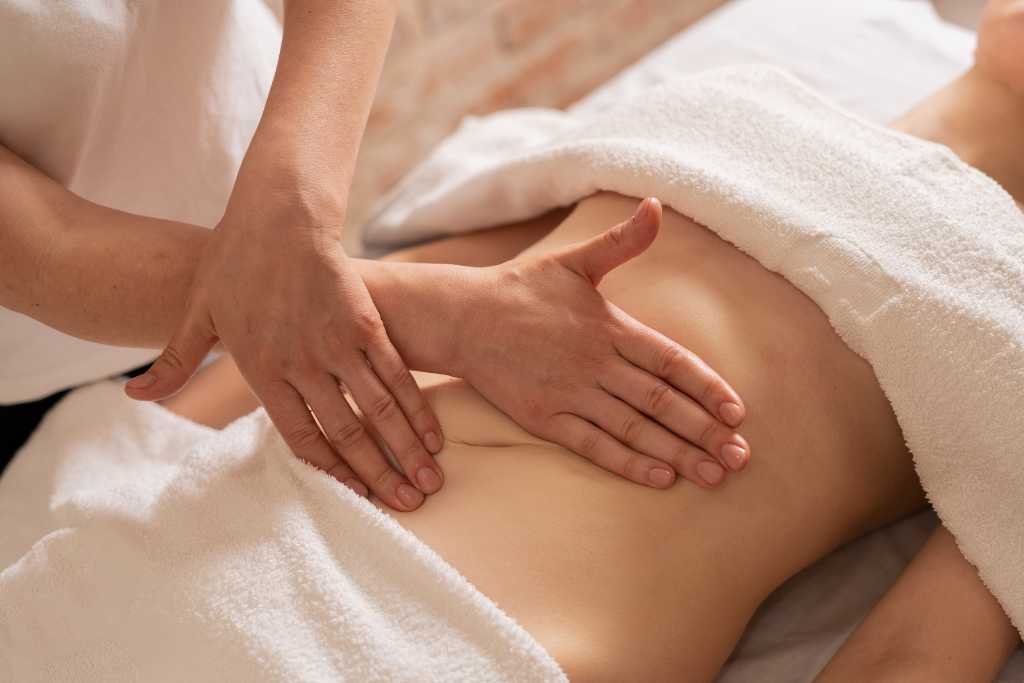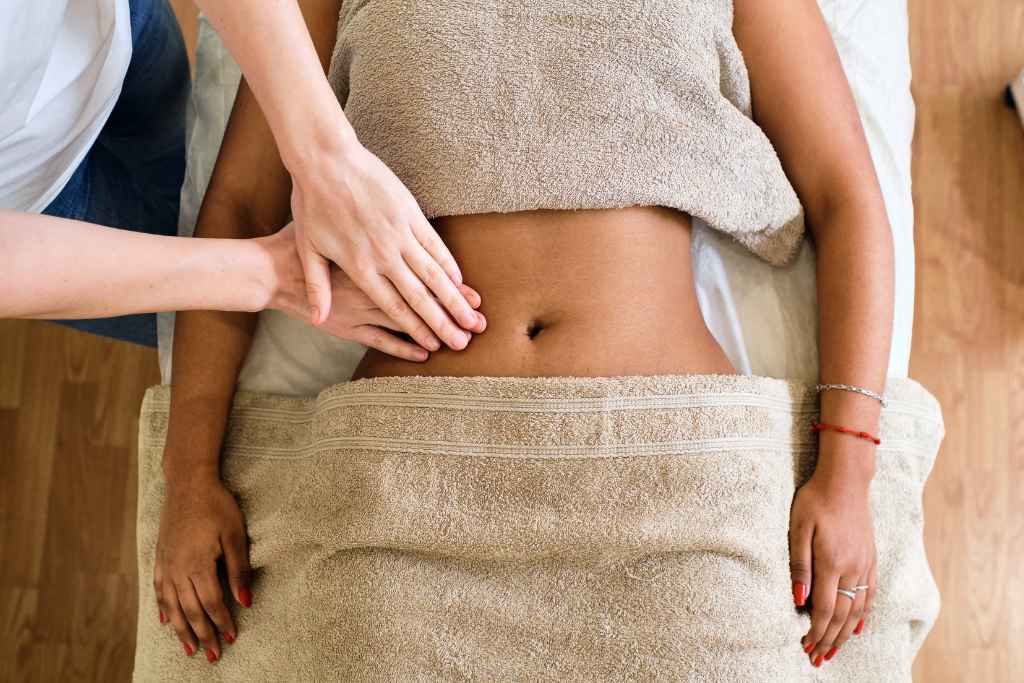Have you ever asked yourself why some individuals are obsessed with lymphatic drainage massage? The testimonials are not fake, it is real, and the techniques have amazing benefits far exceeding the basic form of self-care.
Such massages are helpful in the reduction of swelling and aiding in a speedy recovery post surgery as well, which is why drain massages are widely used in cosmetic and even general medicine.
This guide explains in depth lymphatic drainage massage, what you should be expecting before, during and after the session, and what transformations are reasonably achievable through it.
What is Lymphatic Drainage Massage?
Lymphatic drainage massage is a gentle, rhythmic procedure designed to activate the body’s waste removal system—the lymphatic system.
As opposed to classic massages that aim at muscle relaxation, lymphatic drainage massage treats vessels located beneath the skin. These vessels are responsible for harvesting fluids, toxins, and other unwanted materials from the tissues, and transporting them to waste filters located in lymph nodes.
Muscle movement, breathing, and other bodily functions help in the circulation of lymph within the body. But, the lymphatic system does not have its own pump which is quite necessary.
As a result of living with an injury or surgery, certain medical conditions, or lifestyle choices, fluid can build up in the tissues causing sluggish flow. This can result in swelling, heavy feelings, and puffiness.
The types of drainage massage used are as follows:
Manual Lymphatic Drainage (MLD): A technique created in the 1930s by Dr. Emil Vodder, who believed moving the body’s soft tissue with gentle, repetitive motions could help lymph circulate.
Self lymphatic Drainage: Activities requiring no medical intervention that one can do between appointments.
Mechanical Lymphatic Drainage: The process of using tools, compression clothing, and pneumatic pumps to ease drainage.
How Lymphatic Drainage Works: Everything You Need to Know
Lymphatic system consists of lymphatic vessels, lymph nodes, and lymphatic organs which together act as one of the system’s immune and circulatory systems. This system gathers excess interstitial fluid (the fluid between cells) and returns it back to the bloodstream.
When a qualified professional performs lymphatic drainage massage, they are actually working to:
- Enhance the contraction speed of lymph vessels
- Divert lymph away from a blockage
- Alleviate tissue edema fluid collection
- Bolster immunologic activity by promoting the circulation of lymphocytes
The way lower extremity movement impacts lymphatic drainage function is remarkable since Andrecher proposes that the importance of optimal lymphatic performance is not mainly reserved to balance lymphatic fluid but also includes immune reaction, inflammation control, and even lipid breakdown, which explains the astounding multitude of results from a single method of lymphatic drainage massage.
Before Lymphatic Drainage Massage: Preparation Guide
With the right steps, you can maximize the effectiveness of your lymphatic drainage massage. The period of time before you undergo treatment is equally as crucial as the actual treatment itself.

Medical Prerequisites
It is imperative that you discuss any pre-existing conditions with your medical practitioner before commencing a lymphatic drainage massage if you have the following:
- Current or previous active cancer
- Severe heart failure or any other cardiac problems
- Blood clot or any thrombosis
- Any form of kidney disease
- Active acute infections
- Poorly managed hypertension
When it comes to post-surgical lymphatic drainage, the surgeon usually gives the green light roughly 48 hours after the surgery, although this will depend on the individual and the operation.
Pre-Massage Preparation
To get the best results from a lymphatic drainage massage, you should do the following prep steps.
- Stay hydrated: Drink plenty of water for 24 hours prior to giving your lymphatic fluid some needed thinning.
- Steer clear from salty foods: A reduction in sodium intake for 1 to 2 days prior to treatment helps in reducing fluid retention.
- Avoid alcohol and caffeinated beverages: Both can lead to dehydration and negatively impact lymph circulation.
- Put on comfy clothes: Make sure to wear something loose and comfortable for your appointment.
- Record your “before state”: If tracking progress matters, take photos or jot down notes about the areas of concern.
What to Discuss With Your Therapist
Get ready to talk about the following topics before your lymphatic drainage massage:
- Your general medical history, along with any surgeries you have had and the medication you are on
- Particular problems or difficulties you have
- What are your aims for the treatment? Are
- Past experience (if any) with lymphatic drainage
- Present symptoms experienced, if any, such as swelling, pain, or discomfort.
| Preparation Element | Timing | Importance |
| Hydration | 24-48 hours before | Critical |
| Documentation (before photos) | Day of session | Recommended for tracking |
| Dietary adjustments | 1-2 days before | Important |
| Medical consultation | 1-2 weeks before starting | Essential for certain conditions |
| Mental preparation | Ongoing | Helpful for relaxation |

During the Lymphatic Drainage Massage: What to Expect
Unlike deep tissue massage, a lymphatic drainage session feels incredibly gentle—so gentle that some first-timers wonder if it’s doing anything at all. Don’t be fooled by the light touch; this specialized technique is precisely what makes lymphatic drainage effective.
Step-By-Step Breakdown of a Session
- Initial assessment: Areas of concern or swelling will be evaluated by the therapist.
- Clearing the Lymphatic Vessels: Treating the major lymph nodes (neck, arms, groin region) by gentle stroking which readies them to accept lymph.
- Working From Proximal To Distal: The therapist will usually work outwards from the midsection of the body.
- Light Movements: Action of the hands such as stationary circles, pumping, or scooping, to create light movements.
- Sequentially: Following the lymphatic system pathways.
- Attention on Specific Problem Area: Attention to specific areas of concern for a longer duration.
Light pressure (similar to lying with a quarter on your skin)
- Stretching sensations
- Tingling or warm sensations
- Moving sensation beneath the skin
- Relaxed and sometimes sleepy
- Sensory Perceptions
Duration and Environment
Relaxing in a warm environment is important as is comfort. Sessions of lymphatic drainage treatment are affected by lower temperature since this constricts both the blood and lymph vessels. Lymphatic treatment duration tends to range from 60-90 minutes with a focus on the full body while more specific work is generally shorter, around 30-45 minutes.
Effects: Immediately After the Massage
The “after” phase begins as soon as your treatment ends. It’s essential to understand what to expect so that you know how best to aid your body’s continuing lymphatic flow to maximize the benefits your massage provides.
The following results may be noted during or after the Lymphatic Drainage Massage:
- Mild thirst
- Fatigue that is temporary but shifts to increased energy
- A feeling of lightness in the limbs
- Minimal reduction in treated area puffiness
- Enhanced and clearer skin tone (in some people)
- Increased urination (sometimes quite severe)
- Feeling mildly lightheaded (should go away quickly)
Care After Lymphatic Drainage Massage
These are basic guidelines that need to be followed for the best results from the Lymphatic Drainage Massage:
- Drink more than the usual amount of water: Aim for 2-3 liters of water for the rest of the day
- Light movement: Gentle walking or stretching helps in the continuation of lymph flow
- Use worn compression garments: If your masseuse recommended it (It is especially common for post-surgery cases)
- Raise swollen limbs: Relating to resting, keep these areas raised as much as is practical
- Avoid wearing constrictive garments: Tight bands may impede adequate flow of lymph
- Do not skip exercise: Do not engage in exercise for 24 hours after the treatment
- Decrease inflammation-promoting foods: Sugar and alcoholic drinks should be reduced, as well as highly processed foods
The treatment also comes with restrictions, such as what to avoid directly following a Lymphatic Drainage Massage:
- Hot baths, saunas, and steam showers (these can make circulation go up too much)
- Strenuous exercise or other heavy-lifting
- Consumption of spirits
- Long periods of immobility
Lymphatic Drainage Massage Results – Timeline:
The results of lymphatic drainage massage results may differ for everyone. The progress observed from the massage should not differ significantly but may depend on the body, condition, and dedication put into the treatment.
Typical Results Timeline:
Day 1 (Immediate After)
- Observed immediate reduction in puffiness of the treated areas
- Increased urination
- May feel temporary fatigue
- Initial improvement in tissue texture
Days 2-3 (Short-term Changes)
- The initial reduction in further swelling
- Further range of motion in tissues previously limited due to swelling
- Improved overall wellbeing
- Improvement in the sense of tissue texture
Week 1 (Initial Results)
- Noticeable improvements in body contours
- If the tissue was previously feeling heavy, the feeling has decreased
- Clothes fit better
- Improved appearance of the skin in some cases
Weeks 2-4 (Cumulative Benefits)
- Consistent results observed after a period of time
- Much improvement is noticed in the circulatory system of the body
- Better immune response from the body
Long-term Results (With Regular Sessions)
- Reduction of chronic swelling has been maintained
- Better quality of skin and tissue
- Improved awareness of the body and lymphatic system
The personal factors include: age, severity of illness, pre-existing conditions, lifestyle changes such as diet, hydration, and exercise.
If you’re looking for an impressive before and after transformation, a professional lymphatic drainage massage gives the best results. However, you can take care of your lymphatic system in between sessions with these at-home techniques.
FAQs About Lymphatic Drainage Massage Before and After
How many sessions until I see my results? The majority of people feel at least something different after their first session, and typically, the difference grows larger after 3-6 treatments. For long-term problems such as lymphedema, an initial intensive phase may need 15-20 sessions before moving to a maintenance phase.
Is lymphatic drainage massage painful? No, proper lymphatic drainage should never be painful. The technique applies much lighter pressure than deep tissue massages, using only the weight of a nickel. If your treatment is uncomfortable, your therapist might be using the wrong technique or mistaking deep tissue massage for lymphatic drainage.
Can I do a lymphatic drainage massage while pregnant? With the approval of the healthcare provider, lymphatic drainage can be helpful while pregnant, especially for easing swelling of the legs and feet. Some areas are avoided, and techniques used are modified to address pregnancy. Always consult your prenatal care provider first.
How often should I get a lymphatic drainage massage? That is greatly dependent on your specific condition and goals:
– General wellness: 1-2 times a month.
– Post-surgery: 2-3 times weekly for the first two or three weeks.
– Lymphedema: Intensive to moderate (daily or multiple times weekly), then tapering to maintenance.
– Aesthetic goals: Often 1-2 times weekly for a series of 6-10 sessions, then monthly maintenance.
Will results be permanent? The lymphatic drainage results require some maintenance because the body will continue to produce lymph fluid every day. Maintenance sessions that are regular usually work best after an initial treatment series is done. Diet, hydration, and activity level tend to impact how a person’s lymphatic system functions.
How does a lymphatic drainage massage compare to a compression therapy? These methods serve different purposes, but they do complement each other:
- Lymphatic drainage focuses on actively moving fluid out of the tissues while
- Compression serves the purpose of preventing fluid from re-accumulating.
For best results, especially in lymphedema, both methods are usually required. Together, the two methods are a lot more effective than the standalone.
Conclusion
The difference one can achieve with lymphatic drainage massage goes far beyond what is captured in a photo, ranging from reduction of swelling, enhancement of immune response, improving surgical outcomes, and management of chronic medical conditions. This technique is both simple and powerful and offers a multitude of other benefits as well.
Always remember that lymphatic drainage massage achieves the best results when:
- It is done by a skilled therapist
- It is done routinely as per your treatment plan
- There are proper lifestyle adjustments
- It is done together with other needed treatments
- It is done without unrealistic expectations
So whether you are recovering from surgery, dealing with a chronic illness, or just looking to aid the workings of your body, lymphatic drainage massage can help with improved lymphatic health—with results that are often self-evident.

